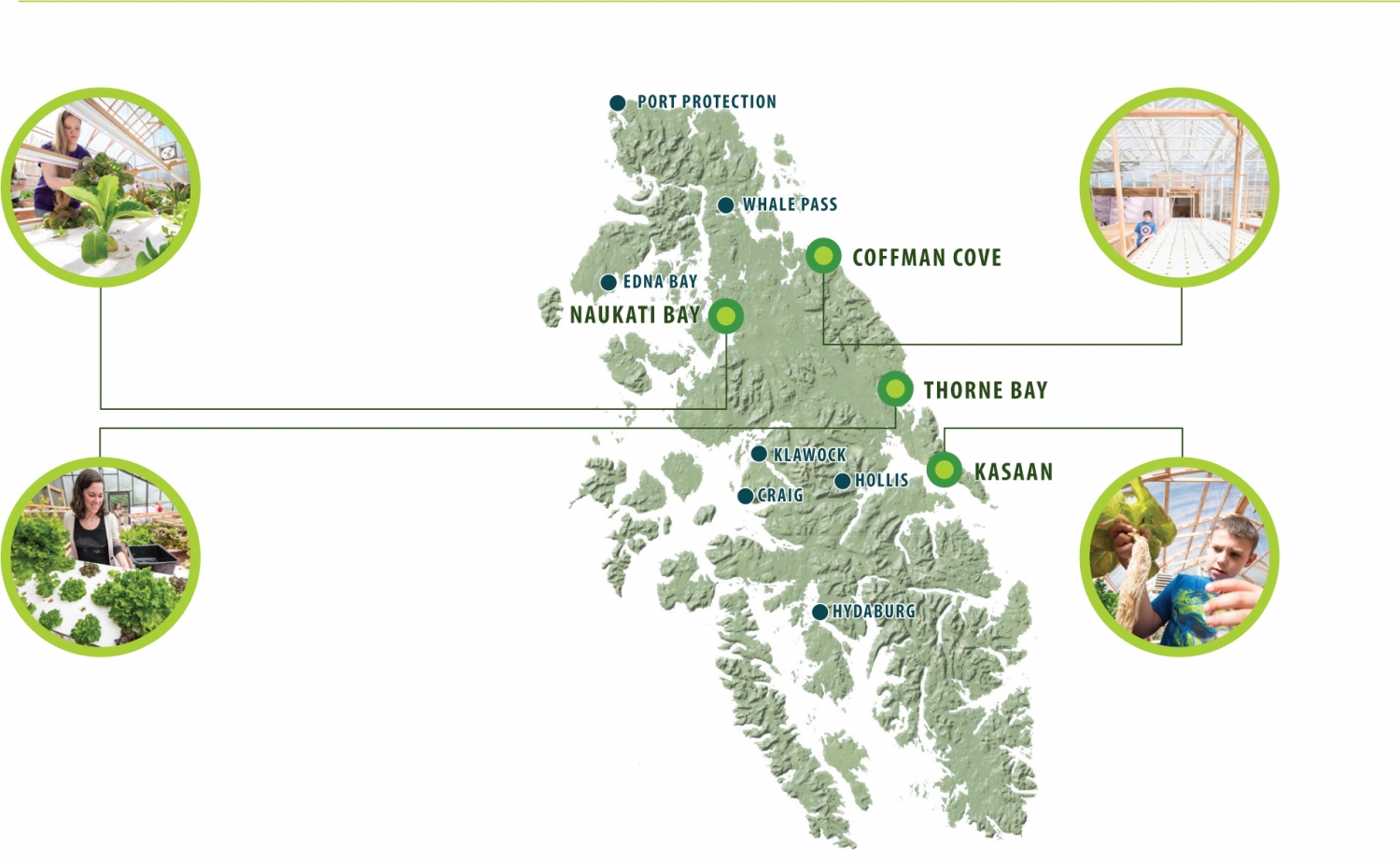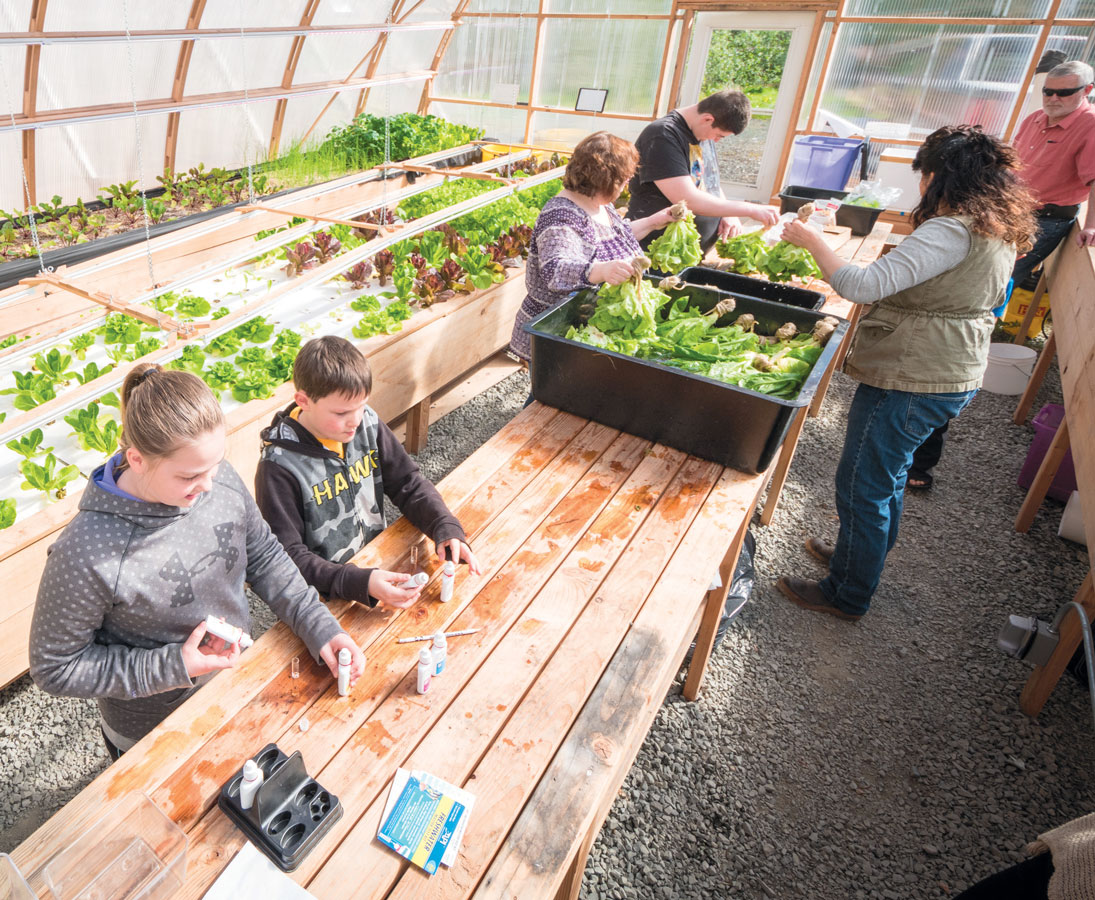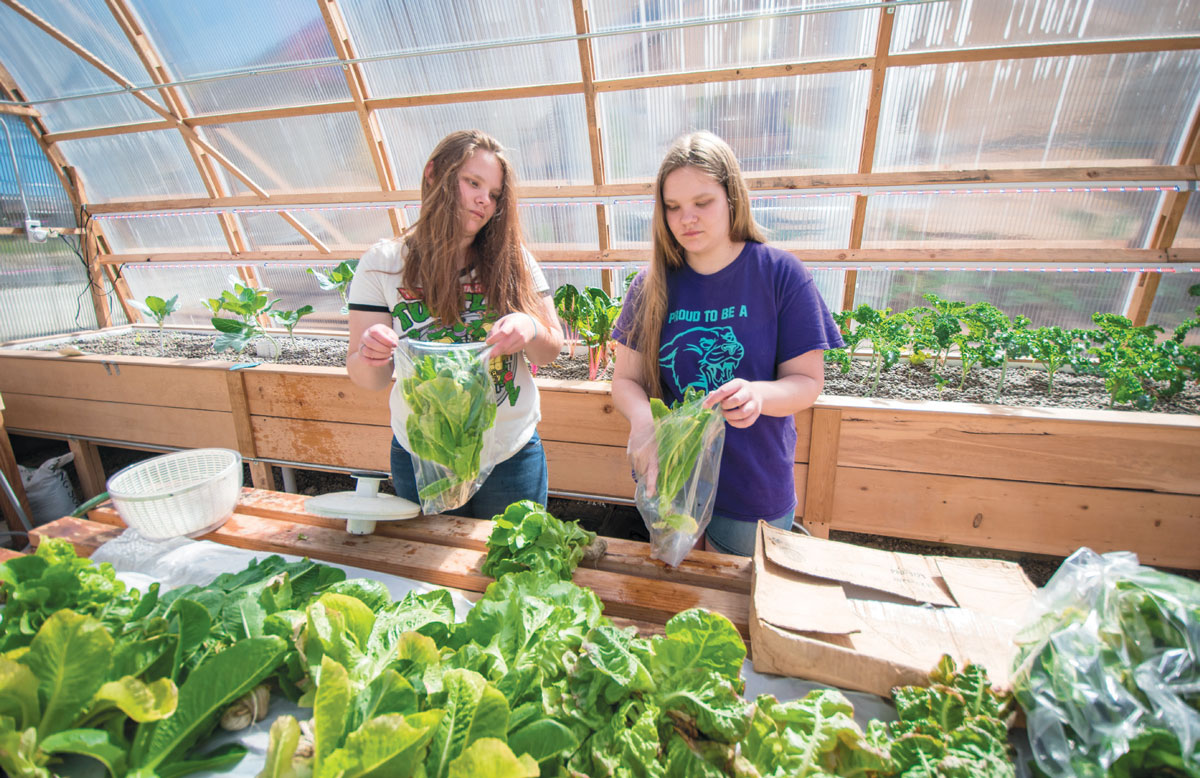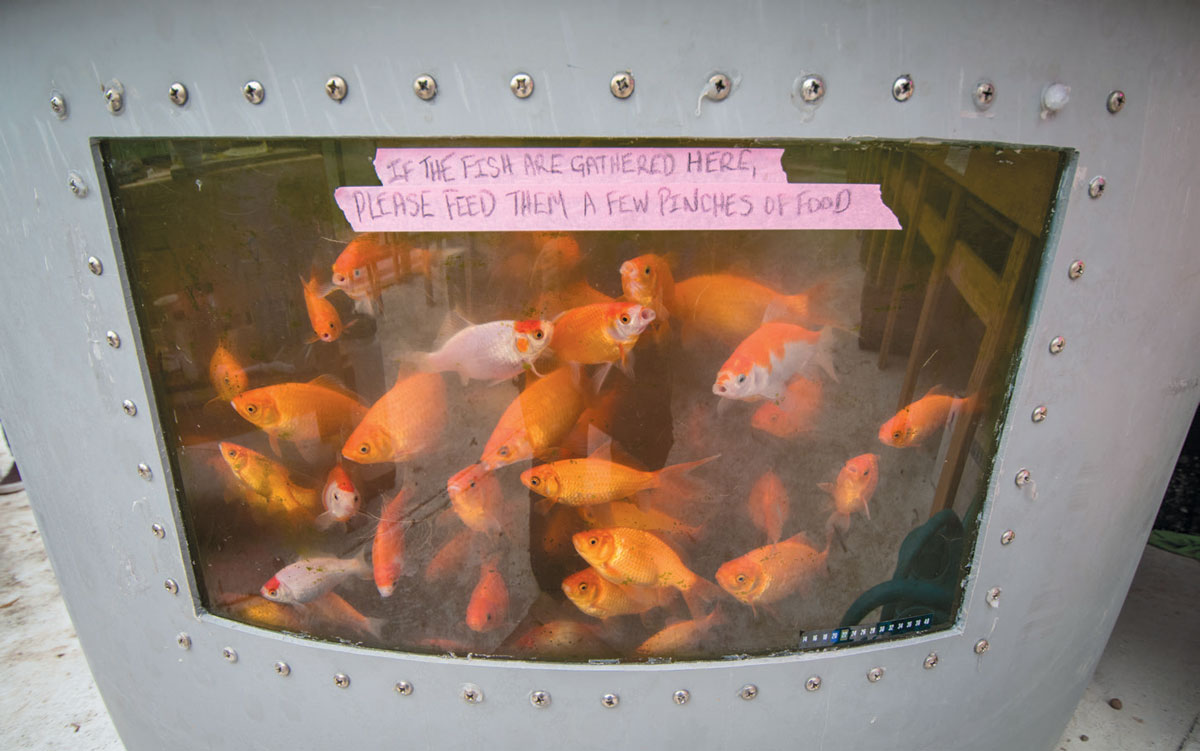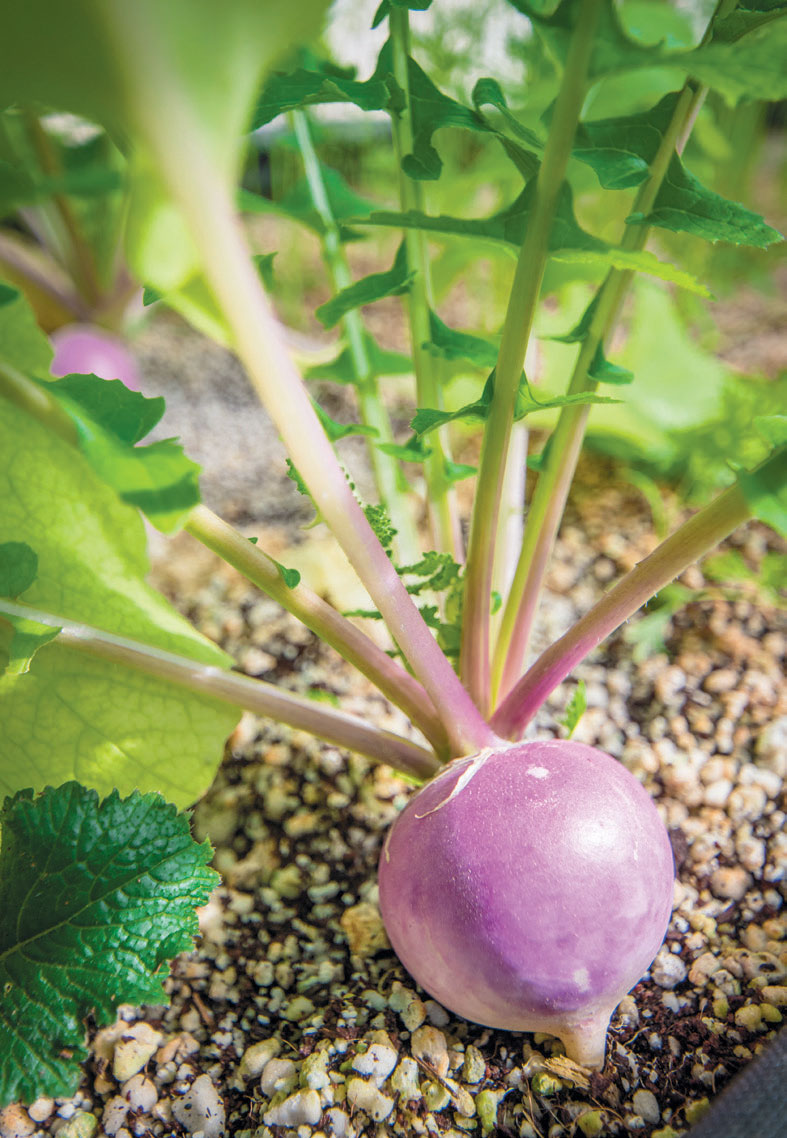Edible Alaska
Back to School
Photo by Bethany Sonsini Goodrich
Students across Prince of Wales Island enjoy a unique, integrated hands-on learning experience while growing fresh vegetables for their school and communities.
Photo by Bethany Sonsini Goodrich
NAUKATI BAY is hours away from the nearest grocery store. Lucky for residents, their aquaponic school greenhouse is providing fresh produce for this community of 140 people. Students prepare freshly cultivated greens for lunch and also sell surplus produce. They also care for chickens and gather eggs daily. THORNE BAY is home to the first school aquaponics greenhouse in Alaska. This community of five hundred residents also enjoys a student-run restaurant and storefront where students sell freshly cultivated produce and art, as well as tortillas and pizza dough they create during culinary classes. COFFMAN COVE boasts the largest school greenhouse in the district. At 6,000 square feet, this greenhouse churns out 800 heads of lettuce every week. Produce is used in school lunches, sold to the community and distributed for sale across Prince of Wales Island. The school also runs an apple orchard, keeps bees and raises chickens and ducks. KASAAN is a small community of only sixty year-long residents and is one of only two Haida communities in Alaska. This seaside village is located at the end of a long bumpy dirt road, over an hour away from the nearest grocery store. In addition to a school greenhouse, Kasaan cares for a large potato garden where residents and students cultivate unique genetic strains of ‘Haida potatoes’ that have been passed along family lines for generations.
Photo by Bethany Sonsini Goodrich
Photo by Bethany Sonsini Goodrich
Kelly Petty and twin sister Jessica package lettuce for sale in the Naukati Bay Greenhouse.
Photo by Bethany Sonsini Goodrich
Hungry fish waiting for a treat.
Photo by Bethany Sonsini Goodrich
Four aquaponic greenhouses in schools in Southeast Alaska are turning fish waste into fresh produce.
Photo by Bethany Sonsini Goodrich
Photo by Bethany Sonsini Goodrich
Four aquaponic greenhouses in schools in Southeast Alaska are turning fish waste into fresh produce. The water from the tank is funneled into a series of pools where rafts of lettuce float beneath energy efficient LED lights.


